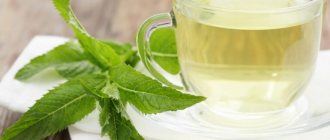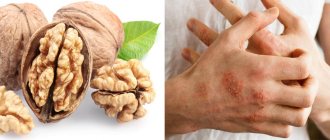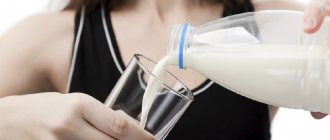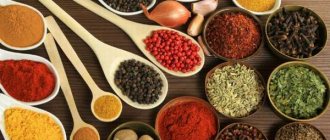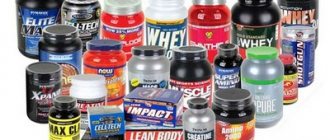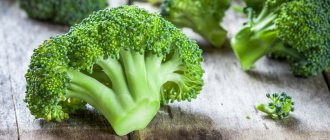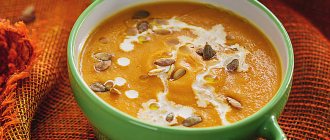Pancreatitis belongs to the category of diseases that require mandatory nutritional correction. It is impossible to improve the patient's condition in any other way. The diet for an inflamed pancreas is strict; especially strict restrictions are imposed during periods of exacerbation, when the diseased organ reacts inadequately to almost any food. At this time, fasting is prescribed, and a few days after the attack has stopped, many foods are completely excluded from the menu. Pumpkin is recommended for pancreatitis, but even in this case there are some necessary restrictions.
Is it possible to eat pumpkin with pancreatitis: features of use
The diet for the pancreas dictates mandatory rules for preparing foods at different stages of the disease - during acute dysfunction or during the disappearance of the bright symptoms of chronic pancreatitis.
During an exacerbation
In case of inflammation of the pancreas, it is allowed to eat only boiled pumpkin, and only in crushed form. After boiling the vegetable, it must be ground through a sieve so as not to force the inflamed organ to work hard due to the coarse fiber. Food is consumed exclusively warm.
From the second week, the menu is expanded: some vegetables or cereals are allowed to be added to pumpkin puree. But you need to follow the rules:
- 300 g is the maximum allowed amount per day,
- It is better to divide the daily norm into several doses, the interval between them is at least 2 hours,
- pureed vegetables should be eaten for 3 weeks, pieces should be excluded from the diet, raw pumpkin or juice too.
During remission
The return of good condition for cholecystitis and pancreatitis expands the methods of preparation and the list of dietary products. During this period, pumpkin can be stewed, adding a small amount of sunflower or butter, or baked, but fried fatty foods are prohibited.
3 months after the exacerbation, juice and fresh pulp are allowed. These raw products especially help remove accumulated poisons and waste from the patient’s body, and a small cellulose content will prevent bloating and prevent diarrhea. But they must be introduced into the diet very carefully, in small portions, the same applies to pumpkin seeds. They need to be slightly dried (do not fry) and eat no more than 10-20 pieces per day.
Indications for use
Products made from pumpkin are recommended for use by people with various liver pathologies. Their main advantage is their complete readiness for consumption.
Of the entire vegetable, you cannot eat only the peel. The remaining elements (pulp, seeds, petioles) are suitable for creating delicious dishes according to various recipes.
Indications for use of pumpkin and its components:
- cardiovascular pathologies;
- impaired liver function;
- stones in cholecystis;
- slagging of the body;
- reduced immunity;
- poor metabolism;
- diabetes;
- problems with gums and teeth;
- phlebeurysm;
- burns, skin ailments;
- eczema, cosmetic problems.
This vegetable is ideal for the dietary nutrition of patients after gall bladder surgery.
The effect of pumpkin on the condition of the liver and its appendages
The main purpose of the human liver is to filter blood. It cleanses the circulatory system of poisons and allergic substances. The owner himself adds “concerns” to this organ by abusing bad habits.
Regular overeating and alcoholic libations in immeasurable volumes become a real test for the organs of bile secretion. Constant exposure to critical factors leads to the fact that the fight against toxins becomes an unbearable burden for the liver.
In such a situation, she needs good helpers. Pumpkin takes on their role. Its healing qualities were appreciated by thousands of people who were faced with gallstone disease.
The vegetable successfully copes with the following tasks:
- removal of excess cholesterol;
- restoration of bile duct patency;
- normalization of metabolic processes (carbohydrates, lipids);
- activation of the intestines and urinary organs.
Pumpkin pulp consists of useful microelements that restore damaged liver cells, and also prevent the destruction of the organ by dangerous parasites and diseases (hepatitis, cirrhosis).
Delicious recipes with pumpkin
Absolutely all pumpkin dishes for pancreatitis must be approved by a doctor, this especially applies to the acute phase of inflammation. Having passed it, a person can add something new to his diet.
Porridge
The recipe is based on millet or rice. You can eat this porridge weekly, but no more than 3 times a week. The following products are needed for cooking:
- 3 tbsp. l. cereals,
- 150 g pumpkin,
- milk and water (one glass),
- oil, salt.
Cut the pumpkin into small cubes, pour a glass of cold water, after it boils, add the cereal, salt, and cook for 20 minutes. Pour in milk and leave on fire for 10 minutes. The prepared porridge is thoroughly pureed with a blender, and the butter is added to the plate immediately before eating.
Cream soup
To make nutritious pumpkin soup, you will need:
- half a kilo of pumpkin
- white bread croutons,
- milk (2 glasses),
- butter (1 tbsp), a little salt.
Grind the vegetable on a coarse grater. Milk is diluted with water (1:1) and brought to a boil. Place the pumpkin and croutons into the container, add a little salt, and reduce the heat. After 10 min. Remove the dish, grind it in a blender, season with oil.
Pumpkin juice
Regular pumpkin juice for pancreatitis in remission may well replace sweets, which are strictly prohibited. It is best to use bright orange specimens, weighing 5-7 kg. The pulp is cut into pieces and sent to a juicer. For variety, mix in equal proportions with carrot or apple. No sugar is added.
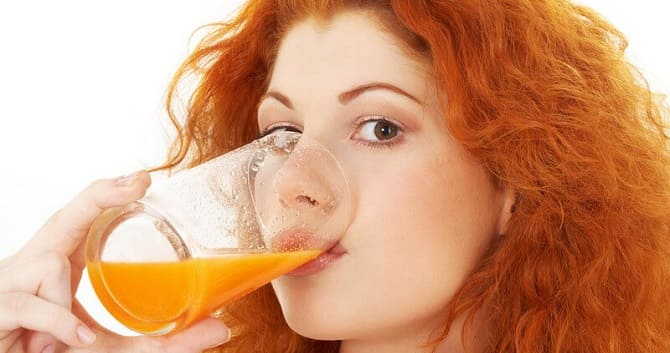
It is better to drink this juice for pancreatitis diluted with water; this must be done correctly - either on an empty stomach, or 40-50 minutes before. before meals. Otherwise, the healing drink will not bring any benefit, but will cause strong fermentation in the stomach.
It is possible to prepare pumpkin juice, which can be stored until winter:
- Squeeze juice from apples and pumpkin (1:1), add lemon zest.
- For every 2 liters of drink add 250 g of sugar.
- Place on the fire, but do not allow it to boil (only up to 90°C), keep for 5 minutes, wrap for a short time.
- After cooling, the juice is poured into jars, covered with lids or rolled up.
Drink 120 ml of apple-pumpkin drink on an empty stomach, the maximum permissible dose per day is 250-500 ml.
Pudding
To prepare this beautiful and tasty dish, take:
- 500 g pumpkin,
- 2 eggs,
- semolina (4 tbsp.),
- sour cream, cottage cheese (2 tbsp.),
- a little raisins (volume depends on desire).
Grind the pulp in a blender. Then mixed with the rest of the ingredients (the raisins are soaked in advance). Place in a deep pan, bake in a slow cooker or oven for 20-30 minutes. Eat cold.
Kissel
To calm the pancreas and add variety to the menu, use this healthy drink. To prepare it you will need:
- 500 g pumpkin,
- 40 g milk,
- water (3 glasses),
- starch - 4 tbsp. l.
Cut the pumpkin into small pieces, simmer over low heat, adding milk. Having brought it to readiness, this mass is thoroughly rubbed through a sieve, filled with water, and placed on the stove again. Stir the starch in a glass of water, pour it into the puree, stirring constantly. Cook for about 5 more minutes, remove and cool slightly.
Casserole
The recipe will really appeal to those with a sweet tooth, whose life is quite boring due to pancreatitis. But you can’t cook the casserole often because of the high fat content.
Ingredients:
- 350 g pumpkin,
- 350 g apples,
- whites of 2 eggs,
- 4 tsp each semolina and sour cream,
- a glass of milk,
- 600 ml water,
- butter (2 tsp),
- sugar and cinnamon to taste.
Apples and vegetables are cut into cubes - the smaller they are, the better. Pour in a mixture of water and milk, add sour cream, simmer until done, add semolina. At the same time, beat the egg whites with sugar and cinnamon. Vegetables and fruits are poured with this mixture, stirred, placed on a greased baking sheet, and cooked in the oven over medium heat for about 30-40 minutes.
Pumpkin-curd cheesecakes
Products:
- 100 g boiled pumpkin,
- 200 g low-fat cottage cheese,
- egg,
- 2 tsp. honey,
- 2 tbsp. l. rice flour,
- salt.
Warm boiled pumpkin is pureed with a fork or in a blender. Do the same with cottage cheese, into which an egg, honey, and a little salt are beaten. Add vegetables and flour to the mixture and knead. Roll into small balls, roll in flour, and place on a baking sheet lined with parchment. Bake for 20 minutes. in an oven heated to 180°C. Served with low-fat sour cream (10%).
Carrot-pumpkin puree
Take these simple products:
- 350 g pumpkin,
- 150 g carrots,
- salt, oil (1 tbsp.).
Vegetables are peeled, finely chopped, poured into boiling water, brought to a boil again, but cooked over minimal heat. The water is drained, the vegetables are chopped in a blender, lightly salted, and oil is added at the last moment. Instead of boiling, you can use baking vegetables.
Cream soup with chicken broth
This dish is allowed only if there have been no symptoms of pancreatitis for more than six months:
- 300 g pumpkin,
- 200 g cauliflower,
- carrot,
- 500 ml chicken broth,
- butter (1 tbsp.),
- salt.
Boil the vegetables until tender, chop them in a blender, add them to chicken broth, in which they are boiled for 10 minutes, and add some salt.

Served with sour cream. For pancreatitis, sour cream should have the lowest fat content.
Pumpkin cookies
You cannot get carried away with such baking if you have pancreatitis, so the recipe is suitable only for rare holidays:
- two thirds of a glass of pumpkin puree,
- a third of a glass of low-fat yogurt,
- grated dried apricots - 5 tbsp. l.,
- pumpkin seeds - 1 tbsp. l.,
- sesame seeds - 1 tbsp. l.,
- two types of flour: a glass of oatmeal and half as much wheat,
- baking powder (1 tsp),
- sugar (3 tbsp), a little salt.
Raw pumpkin is pureed in a blender and the remaining ingredients are added. The finished dough is left for half an hour. Form cookies with wet hands and place on a baking sheet covered with baking paper. At 180°C the baked goods are kept in the oven for 20 minutes.
Pumpkin pieces baked with honey
300 g of pumpkin is cut into thin slices, placed on a greased baking sheet, and a thin layer of honey is applied. Bake at 180°C until done.
Pumpkin and dried apricot puree
During the period of remission of pancreatitis, dried apricots will help overcome anemia, which is a frequent companion of this disease.
- 900 g pumpkin,
- 120 g dried apricots,
- granulated sugar - to taste and desire,
- butter (20-30 g).
Pre-soak the dried apricots for half an hour in cool water and chop well. Cut the pumpkin into small cubes, add a small amount of water, and simmer until half cooked. Combine it with dried fruits and leave on the fire until the vegetable becomes soft. Remove, pour in sugar, let cool slightly, serve with butter.
Conclusions on the topic
The combination of pumpkin and honey is a fairly popular recipe for the treatment of diseases affecting the functionality of the liver. Traditional medicine reports several ways to prepare a pumpkin-based remedy. The effectiveness of therapy directly depends on the duration, degree of development of the disease and the general condition of the body. Doctors recommend combining the use of folk remedies with drug treatment, if the disease is in a chronic stage of development, pumpkin-honey medicine helps alleviate the condition and speed up the removal of waste and toxins from the body.
If the patient is allergic to honey, which occurs quite often, or he simply does not like the taste of this product, treatment can be carried out using pulp, juice or pumpkin seeds. The main purpose of honey is to strengthen the immune system and improve the taste of medicine, and other juices or regular sugar can do the job. When choosing a specific prescription, you should make sure that the product does not cause a negative reaction if used together with medications.
In the article we discuss pumpkin for the liver. We will tell you what beneficial properties it has, how to properly cleanse the liver, and why sometimes this healthy vegetable has a negative effect on humans. You will learn the method of preparing pumpkin with honey, and who benefits from this dish.
Pumpkin treatment
The characteristics of the pulp of this vegetable are:
- fast digestion,
- low fiber content, prevents constipation,
- suppression of inflammation,
- improvement of metabolism,
- normalization of bile excretion,
- neutralization of hydrochloric acid.
If you add low calorie content to this list, it becomes clear that it simply needs to be constantly included in the diet of both healthy people and those who suffer from pancreatitis.
Because of these advantages, the vegetable is recommended immediately after completing a fast during an acute attack of pancreatitis. During the period of remission, pumpkin, which improves digestion, can become the main dish on the menu.
Precautions and restrictions
If pancreatitis does not worsen when eating boiled or fresh pumpkin, a nutritionist will be happy to recommend it as a main dish. However, you must follow some recommendations related to thermally untreated products for pancreatitis:
- It is better to introduce raw vegetables into the diet no earlier than three months after an acute attack of pancreatitis has resolved.
- Such dishes are allowed if during the entire period of eating them there was not a single symptom of pancreatitis - pain, nausea or vomiting, gastrointestinal upset.
- A doctor's advice is necessary in any case.
Pumpkin oil for pancreatitis in remission has no special contraindications. Among the advantages is a choleretic effect. For prevention, add it to porridge or drink 1 tsp on an empty stomach. But self-prescribing oil is prohibited.
Eating pumpkin for pancreatitis has one more limitation: it cannot be mixed with large amounts of other fruits and vegetables at one time. Therefore, the fewer herbal components in the recipe, the lower the risk of detecting alarming symptoms of pancreatitis.
1
What to remember
- You should not take raw pumpkin during periods of exacerbation of liver disease.
- It is advisable to take pumpkin and honey for the liver (there are many recipes) on an empty stomach. If you have other chronic diseases in addition to liver disease, discuss the intake of vegetables with your doctor.
- Pumpkin juice (the benefits and harm to the liver are described above) is an excellent choleretic and cleansing agent. However, you need to take into account contraindications for its use.
Please support the project - tell us about us


